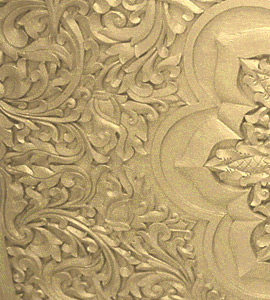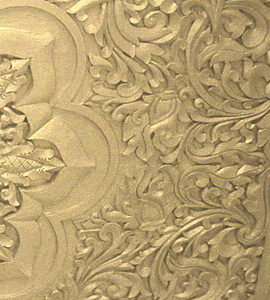


Asoka and the spread of Dhamma
History shows that during the time of the Buddha, the Kings Bimbisara, Suddhodana, and Prasenajita received great benefit from their practice of the Dhamma, and naturally wanted to share this benefit with others. They enthusiastically supported the dissemination of the Buddha’s teaching in their respective kingdoms. Yet the fact remains that the Dhamma spread to the masses not only because of this royal patronage but because of the efficacy of the technique itself. This technique enables anyone who applies it to come out of misery by rooting out the mental impurities of greed (lobha), hatred (dosa), and delusion (moha). A simple and universal technique, it can be practised by men and women from any class, any sect, any communal group, with the same results. Suffering is universal: unwanted things happen and desired things may or may not happen. A universal malady must have a universal remedy: Dhamma is this remedy. The Buddha compassionately and freely distributed the Dhamma throughout northern India, attracting a large number of people in what was then called Majjhima Desa.
Similarly after the time of the Buddha, during the time of Emperor Asoka in the third century B.C., the Dhamma spread widely. Again this was mainly because of the practical, applied aspect of the teaching (Dhamma paṭipatti). Several Asokan rock edicts prove this fact. Asoka must have himself experienced the beneficial results of this technique, and he propagated the Dhamma with great zeal. It was out of the volition to serve others, which develops when the mind becomes purified, that he put forth so much effort to help his subjects in both the mundane as well as the supramundane spheres. On the Pillar Edict #7 he points out two reasons why he succeeded in this. One was the rule of law and order in his kingdom (Dhammaniyamani), but he gave more emphasis to the second reason which was the practice of meditation (nijhatiya), the practical aspect of the Dhamma. This shows that he appreciated the fact that the practice of the Dhamma is the main reason for its spread.
It was after the Third Council under Asoka’s patronage that fully liberated arahant monks were sent out of northern India to nine different areas to make the Dhamma available to more people. These monks were called Dhamma dutas (Dhamma messengers). They naturally gave emphasis to the practical aspect of the Dhamma by which they themselves had become free from mental impurities. Filled with love and compassion, they attracted large numbers of people to the path of liberation.
The following are the names of the elder monks (Theras) and the nine areas where they went to teach Dhamma:
Majjhantika Thera: Kasmira and Gandhara (Kashmir, Afghanistan, Peshawar and Rawalpindi in Northwest Pakistan)
Mahadeva Thera: Mahisamandala (Mysore)
Rakkhita Thera: Vanavasi (North Kanara in South India)
Yonaka Dhammarakkhita Thera: Aparantaka (Modern Northern Gujarat Kathiavar, Kachcha and Sindh)
Mahadhamma Rakkhita Thera: Maharattha (parts of Maharashtra around the source of Godavari)
Maha Rakkhita Thera: Yonakaloka (Ancient Greece)
Majjhima Thera: Himavanta Padesa Bhaga (Himalayan region)
Sona and Uttara Theras: Suvanna Bhumi (Burma)
Mahinda Thera and others: Tambapannidipa (Sri Lanka)
Asoka also sent teachers to as far away as present day Syria and Egypt. He paved the way for coming generations to spread the sublime Dhamma to the entire world.
His lead was followed by King Kanishka who sent teachers such as the Theras Kumarajiva and Bodhidhamma to Central Asia and China.
From there the Dhamma went to Korea in the early 4th century A.D., and then to Japan. In India, Dhamma Universities—Takkasila, Nalanda, Vikkamasila, and others—developed, flourished, and attracted learned people from as far away as China. Dhamma also spread throughout Southeast Asia. Large numbers of people started practising in Thailand, Cambodia, Laos, Vietnam, and Indonesia. Tibet also received the Dhamma, through the service of Santirakshita, Padmasambhava, Atisha, and Kamalashila.
Today the technique which the Buddha taught 2,500 years ago is once again flourishing, and is giving the same results now as it did then. Thousands of people in India and in countries around the world are learning Vipassana. What is attracting so many different types of people to the Dhamma is the same as what attracted them 2,500 years ago: the very practical nature of the teaching which is vivid, tangible, wholesome, easily understood, giving benefit here and now, leading one step-by-step to the goal.
As many people start to practise Dhamma once again, we can begin to imagine what life in the time of the Buddha, and later in the time of Asoka, was like: a society full of peace and harmony as millions of people became established in love, compassion, and wisdom through the practice of Dhamma.
May all beings be happy. May peace and harmony prevail.

